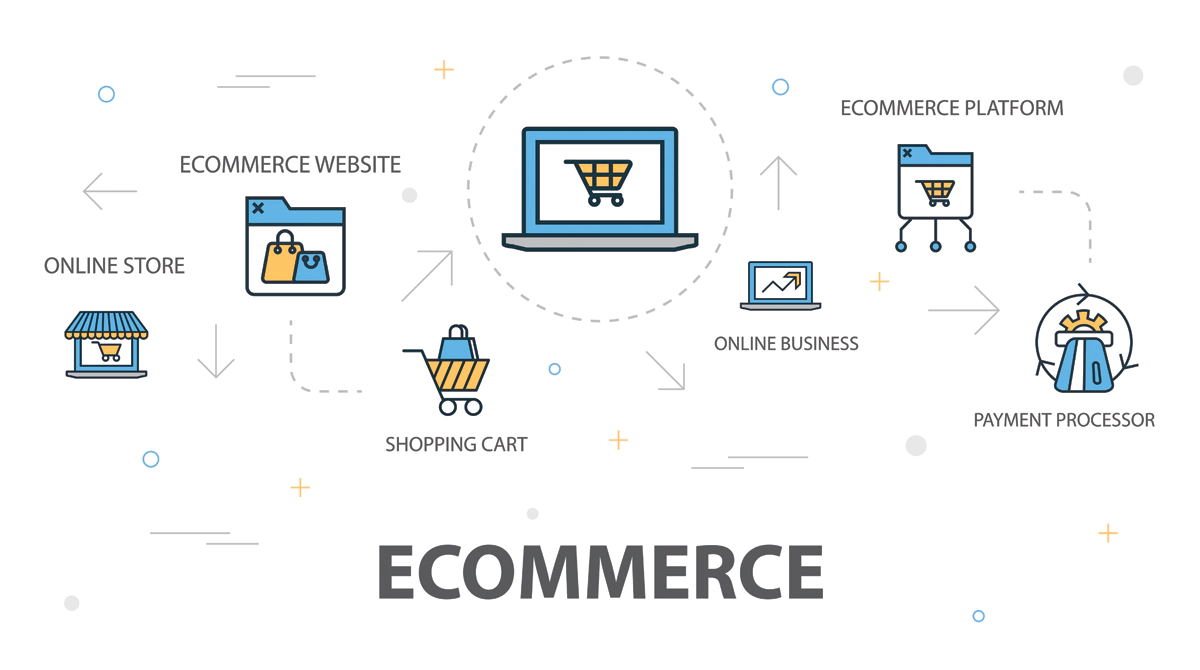As a business owner, when you build a website, the primary aim is to reach a wider audience, showcase your products and services and provide them with the best user experience. You want the visitors to spend maximum time on your site and also perform certain actions that qualify as engagement. Whether it’s filling out a form, subscribing to the newsletter or making an enquiry, all these count to user engagement.
Your web development company will continuously implement various processes to engage the visitors with the website. Conversion rate optimisation strategy is a blanket term that defines these processes and helps you keep the website engaging. This powerful strategy can significantly impact your SEO efforts, resulting in enhanced visibility and, ultimately, higher conversions.
With this article, we intend to delve into a detailed analysis of conversion rate optimisation and how it can bolster your SEO efforts. So, let’s keep reading-
What Is Conversion Rate Optimisation (CRO)?
Conversion rate optimisation, or CRO, is like making your website super convincing. It’s about getting more people who visit your site to do what you want, like signing up, buying products, or clicking certain links. CRO mixes the tricks of persuasion with the smarts of numbers.
The main idea is to make sure that when folks come to your website, they’re more likely to become your friends or customers. It’s all about creating a smooth user journey that makes visitors turn into leads. Experts calculate conversion rate optimisation with the formula:
Conversion Rate = Number of Conversions/Total number of visitors * 100
Why Is CRO Important?
While SEO brings traffic to the site, its CRO converts these into leads, generating concrete profit for the business. That’s why conversion rate optimisation holds immense importance.
Firstly, it maximises the return on investment (ROI) of your digital marketing efforts. Instead of constantly seeking to attract new visitors, you can extract more value from your existing traffic. It translates to cost-effectiveness and a higher revenue stream.
Secondly, CRO boosts user experience. By streamlining the path to conversion, you create a seamless and enjoyable journey for your visitors. It not only encourages them to convert but also keeps them engaged, potentially reducing bounce rates and improving your website’s overall credibility.
What Is the Most Common Conversion Rate Optimisation Strategy?
Bringing new customers to your website regularly is quite a daunting task, especially when not just Google but Facebook, Instagram and all other online channels help competitor brands to advertise. In such a scenario, marketers think of strategies that help the website to make the most out of current visitors.
For example, if there are 100 visitors on your site and 2 subscribe to the newsletter and engage with the content, your conversion rate becomes 2%. To increase this rate, digital marketers focus on implementing techniques that persuade a few more visitors to click on the CTAs, thereby increasing the conversion rate. These techniques are commonly called conversion rate optimisation strategies.
Given below are the 3 pivotal questions that assist marketers in creating their conversion rate optimisation strategy. These help them to understand user behaviour and craft policies that engage them on the website.
- What drives the visitors to the site?
- What persuades them to engage with the site?
- When and Why did they abandon the site?
Now, let’s understand a few actions that a marketer will undertake to improve the conversion rate of a website.
Easy-To-Navigate Websites
For higher conversion rates, it’s essential that the visitors find your website easy to navigate. When they quickly find the information they seek, there is a high chance that they will perform an action that increases your conversion rate.
According to Forbes Advisor, a visitor will spend around 6.44 seconds looking at the navigation menu. If it doesn’t appease them or worse, if it confuses them, they are more likely to look for other websites. Therefore, streamlining your website’s navigation by making it intuitive and efficient will not only enhance the user experience but also foster a higher probability of conversions.
CTAs in the Blog Post
Visitors glance through the blogs to get more insights about the products and services extended by the company. However, they aren’t necessarily reading the entire blog. Instead, they glance through it, looking for key points that satiate their search.
Earlier blogs displayed the CTA in the end. But not it isn’t a feasible option because users aren’t scrolling towards the end to find the next action. Therefore, employing compelling and action-oriented phrases and strategically placing the CTAs in the H3 throughout the blog post helps attain better conversion rates.
Lead Flows on Blogs
Lead flows are sleek pop-up forms that are easy to fill, user-friendly and mobile-optimised. Incorporating lead flows on your blog can significantly impact your CRO. These come in all types, including drop-down banners and slide-in boxes. These attention-grabbing elements can help to elevate your conversion rate, provided you give valuable content to the visitor. It’s a win-win situation for both the brand and the user, as one gets the valuable information, and the brand gets the conversion.
A/B Testing for the Landing Page
Landing pages are integral for the conversion rate optimisation strategy. It’s because landing pages are the place where a visitor is most likely to sign up for a subscription or purchase a product. In short, landing pages deliver the most number of conversions for a site and are thus considered critical for CRO strategy.
A/B testing is a process that enables marketers to analyse the performance of landing pages. It can be best understood with an example. Imagine you have an online store selling sunglasses, and you want more people to buy them when they visit your website. You create two versions of your landing page:
Version A features a model wearing sunglasses at the beach, and the “Buy Now” button is blue. On the contrary, version B has a different model wearing sunglasses in a city setting, and the “Buy Now” button is green.
You now show half of your website visitors Version A and the other half Version B. After a while, when you check the results, you find out that Version B gets a lot more clicks and purchases than Version A. So, you decide to use Version B for your landing page. This simple A/B test helped you optimise your conversion rate and increase sales, making your online sunglasses store more successful.
Develop High-Quality Content
High-quality content is instrumental in elevating the conversion rate of a website. Relevant, engaging and useful content lures the visitors and makes them stay on the site for longer periods. It also instils trust in them for your brand. When visitors trust you, there are more chances of them taking the next step, be it signing up, purchasing, or sharing your content.
Good content shows you’re an expert, solving their problems, and that’s like having a trustworthy friend guiding them. It makes your website a warm, welcoming place, apt for higher conversion rates.
Simplify the Forms
Many a time, we see visitors willing to sign up for a newsletter but abort it when they lengthy and complicated form. It is a conversion killer. Presently, marketers know that concise forms are the only way for a visitor to engage with the website. They now keep the process as simple as possible by generating a form that requires minimum information. This way, users can complete it with a few clicks, thereby increasing the conversion rates.
Leverage Social Proofs
When you showcase to the visitors that your customers love what you offer, they will also wish to try your products. This methodology is popular as leveraging social proof. Reviews, ratings and testimonials from happy customers are all examples of making the best use of social proof to earn the trust of potential customers.
It’s a common human behaviour to follow the crowd. For instance, if one of your family members or friends states that food from a particular restaurant tastes divine, you might as well wish to visit the place someday. The same feeling arises when you see reviews on a website and tend to trust the past customers of the brand. Social proof acts like a friendly nudge, making visitors say, “I want that too!” Marketers make the most use of these to increase conversion rates and bring some business to the brand.
Keep On Analysing
CRO is an ongoing process. Regularly analyse your data to identify trends, patterns, and areas for improvement. The digital landscape is constantly evolving, and staying ahead requires constant adaptation.
What Are the Tools That Aid in Conversion Rate Optimisation Strategy?
CRO uses multiple tools to gauge user behaviour and employ strategies that increase conversion rates. Using these provides valuable insights and data that help in fine-tuning your conversion rate optimisation strategies. Below is a glimpse of a few of these-
- Analytics Tools: Tools like Google Analytics help you understand visitor behaviour.
- A/B Testing Platforms: Tools like Optimizely enable you to compare different versions of your website to see which one converts better.
- Heatmaps and Session Recording: Services like Hotjar give insights into how users interact with your site.
- Conversion Funnels: Tools like Kissmetrics track the user journey, helping to identify drop-off points.
- Landing Page Builders: Tools like Unbounce allow you to create and test dedicated landing pages.
- Email Marketing Software: To send targeted messages to nurture leads.
- Feedback and Survey Tools: Services like SurveyMonkey help gather user opinions.
How Do CRO Strategies Influence SEO?
Technically, SEO and CRO have no direct link. However, these processes function together to create trust and value for the brand.
SEO focuses on bringing organic traffic to the site with the help of targeted keywords, while CRO aims to convert the traffic into potential leads by enhancing the user experience.
As you both know, these processes work towards different outcomes, yet they do influence each other. For example, we know that CRO works towards giving the users the best experience on the site, so when Google notices that a visitor spends more time on the website, it understands that the content adds value and answers the users. Therefore, it will categorise the site as trustworthy and increase its search engine ranking.
Thus, we can conclude that CRO and SEO are indirectly correlated.
Wrapping Up
Conversion rate optimisation is a game-changer. It fine-tunes your website to encourage visitors to take desired actions. By simplifying the conversion process, optimising content, and leveraging social proofs, you can significantly enhance your chances of success.
Make My Website stands out as a top-notch choice, thanks to their knack for turning your digital dreams into reality. They’re like the web wizards who make things simple for you. With a focus on user-friendly designs, speedy loading, and mobile responsiveness, they ensure your website not only looks great but works seamlessly. Plus, they’ve got a knack for understanding your unique needs and goals, which makes them a reliable partner in this vast online world.



















